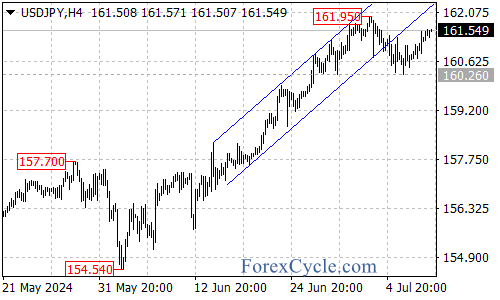On Tuesday, July 9th, the USD/JPY pair increased by 0.29%, closing at 161.28. This keeps the pair just below the 38-year high of 161.95 reached last week.

Key Factors Influencing USD/JPY
- Fed Chair Powell’s Testimony:
- During his testimony to Congress, Fed Chair Jerome Powell stated that inflation remains “above” the Fed’s 2% target but has been improving in recent months.
- Powell indicated that “more good data” would strengthen the case for a rate cut.
- He noted that the job market has cooled and highlighted the dual risks the economy faces, suggesting that the Fed cannot focus solely on inflation.
- However, Powell did not provide the dovish outlook or a clear timeline for rate cuts that some market participants had hoped for, offering slight support to the dollar.
- Bank of Japan (BOJ) Outlook:
- The BOJ is expected to announce a quantitative tightening plan at its policy meeting at the end of the month.
- On Tuesday, the BOJ released a summary of opinions from a survey of bond market participants, discussing how the central bank should reduce its massive bond purchases.
- If the BOJ significantly cuts its bond purchases at the upcoming meeting, it could provide support for the yen.
Upcoming Events to Watch
- US CPI Data: Scheduled for Thursday, this data could be a crucial factor for future US interest rates and the USD/JPY pair’s direction.
Technical Analysis
- Support Levels: The USD/JPY pair is holding above the 160.26 support level, indicating that dollar bulls are still in control.
- Resistance Levels: There is significant short-term resistance around the 162.00 level.
If Thursday’s US inflation data remains strong, it could push the USD/JPY to new highs. Conversely, weaker data might lead to profit-taking and a potential pullback.
Conclusion
The USD/JPY pair remains influenced by both US and Japanese central bank policies. Traders should closely monitor upcoming economic data and central bank announcements for further direction. The current market environment suggests cautious optimism for the dollar, with key levels providing important signals for future movements.

